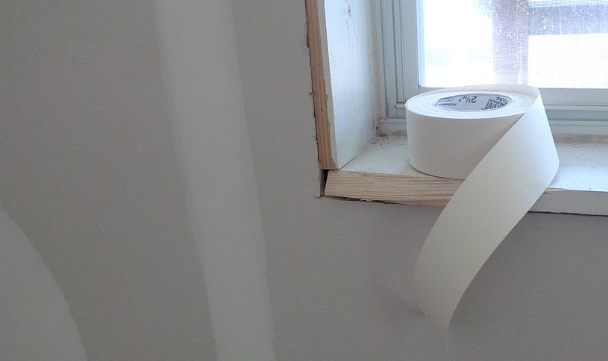Getting the right materials for any job is vital. Fortunately these days it’s not hard to find just the right quality product, designed specifically for the task in hand.
That’s why plasterboard joint tape comes in two types, so when you’re planning the finishing materials for your next job you can make sure it fits the purpose. How do you know which kind of joint tape to pick? No problem. Here’s all the information you need on plasterboard joint tape.
Basically, for plasterboard joining you’re looking at using either scrim tape, or jointing tape. There are good reasons why either of these can be your perfect choice, depending on the circumstances, and of course there are often ways around it if you need to use the other. Let’s look at the difference between the two.
Scrim Tape
Scrim tape is a newer product and it’s made from fibreglass. It’s great to use on a flat join because it comes self-adhesive, so it’s ready to stick into place, without the need to add an extra compound or filler underneath. Because the fibreglass is woven into a mesh, it has flexibility and strength that keeps it firmly in place while you spread the jointing compound over the join.
Remember that, although you can fold scrim tape, and it can sometimes be perfect for internal joints, for angles it’s usually not going to give you the same crisp edge you’d get from a pre-creased jointing tape.
Jointing Tape
So how about jointing tape? Jointing tape is made from paper, which has its own pros and cons. In practice, many professionals still prefer it for most jobs as it’s cheaper and comes in larger quantities so it’s convenient to have on hand for a range of jobs. But it’s a matter of preference.
If you need a tape you can fold and crease for a corner or angled join, you’re probably going to be looking at jointing tape over scrim tape. Jointing tape comes ready creased, but it isn’t self-adhesive. It’s not as strong as scrim tape, and you’ll need to add extra jointing compound, although experienced tradesmen usually find ways around this.
Metal Angle Tape
Last but by no means least, we have metal angle tape. Perhaps the least well-known plasterboard tape variety, this option is specifically designed for external corner joints and unique angles like those around bay windows for example.
With such a specific purpose, you need to have the right circumstances to use this tape – there’s little point using it on a flat joint due to the two strips of thin steel embedded into the trim. This is what helps to create a crisp, clean finish on external corners and ensures a sharp line on all angles.
It’s the perfect solution for areas where rigid angle beads aren’t suitable, so if you’re looking for a simple way to tidy up angles and external edges with minimal fuss, metal angle tape could be the option for you.
Summary
So, in summary, the professionals have their own preferences and workarounds. But if you’re new to this kind of job, it’s generally worth using scrim tape for a flat surface and joint tape for an angle.
For a perfect result, it’s essential to choose the right plasterboard joint tape. An unwanted crease or bulge will be hard to hide, whereas a smooth and simple join is going to make it so much easier for you to achieve a professional overall finish.

